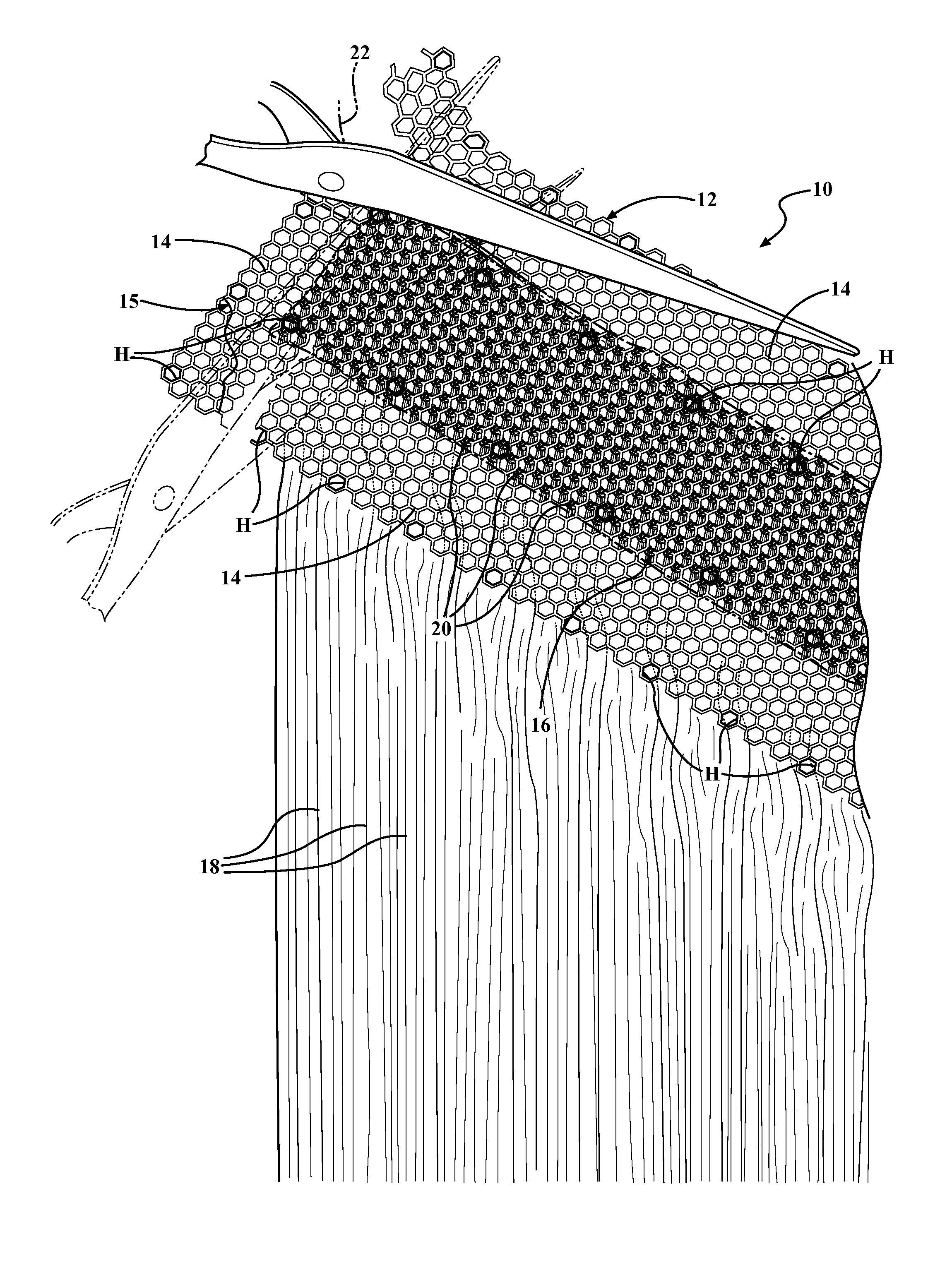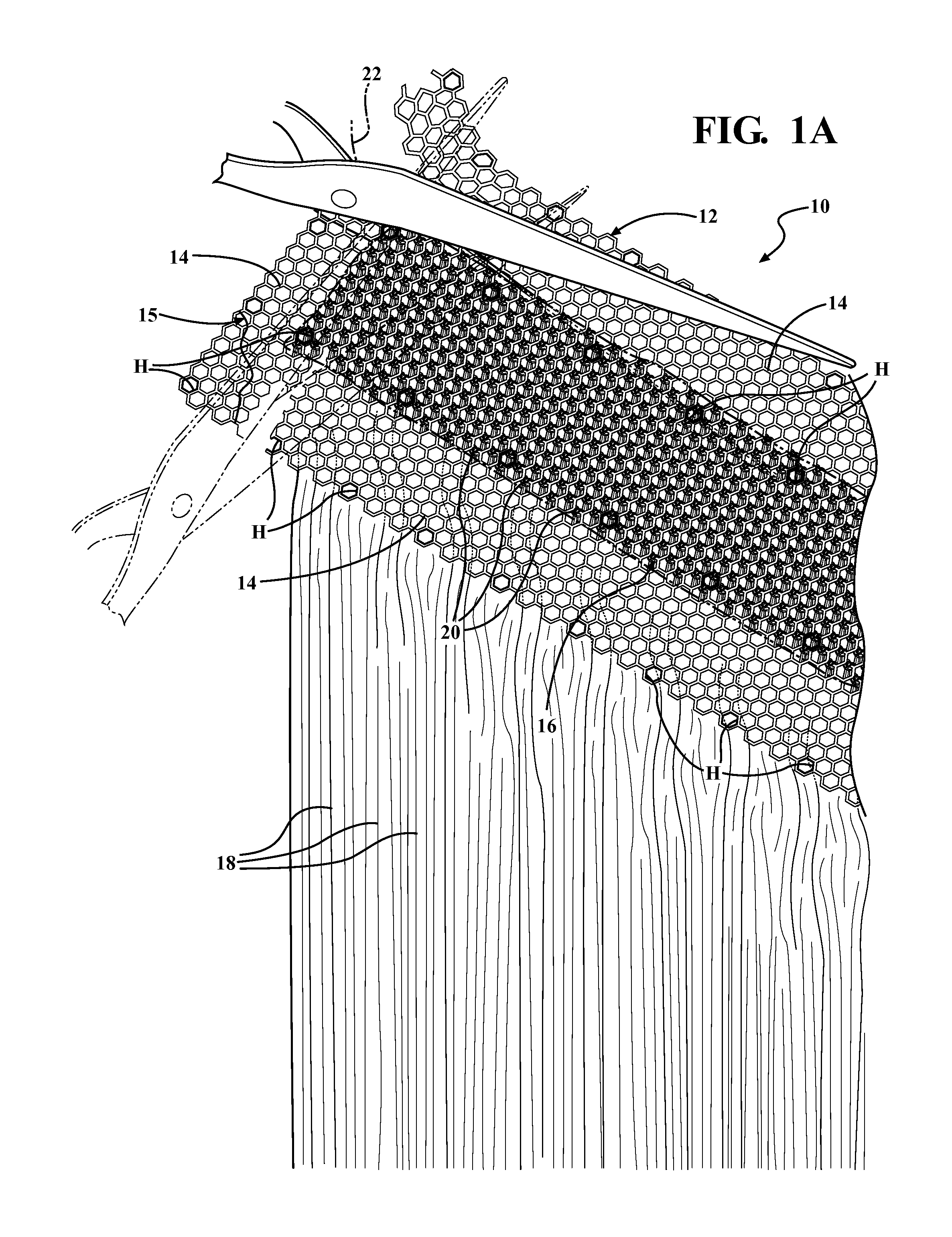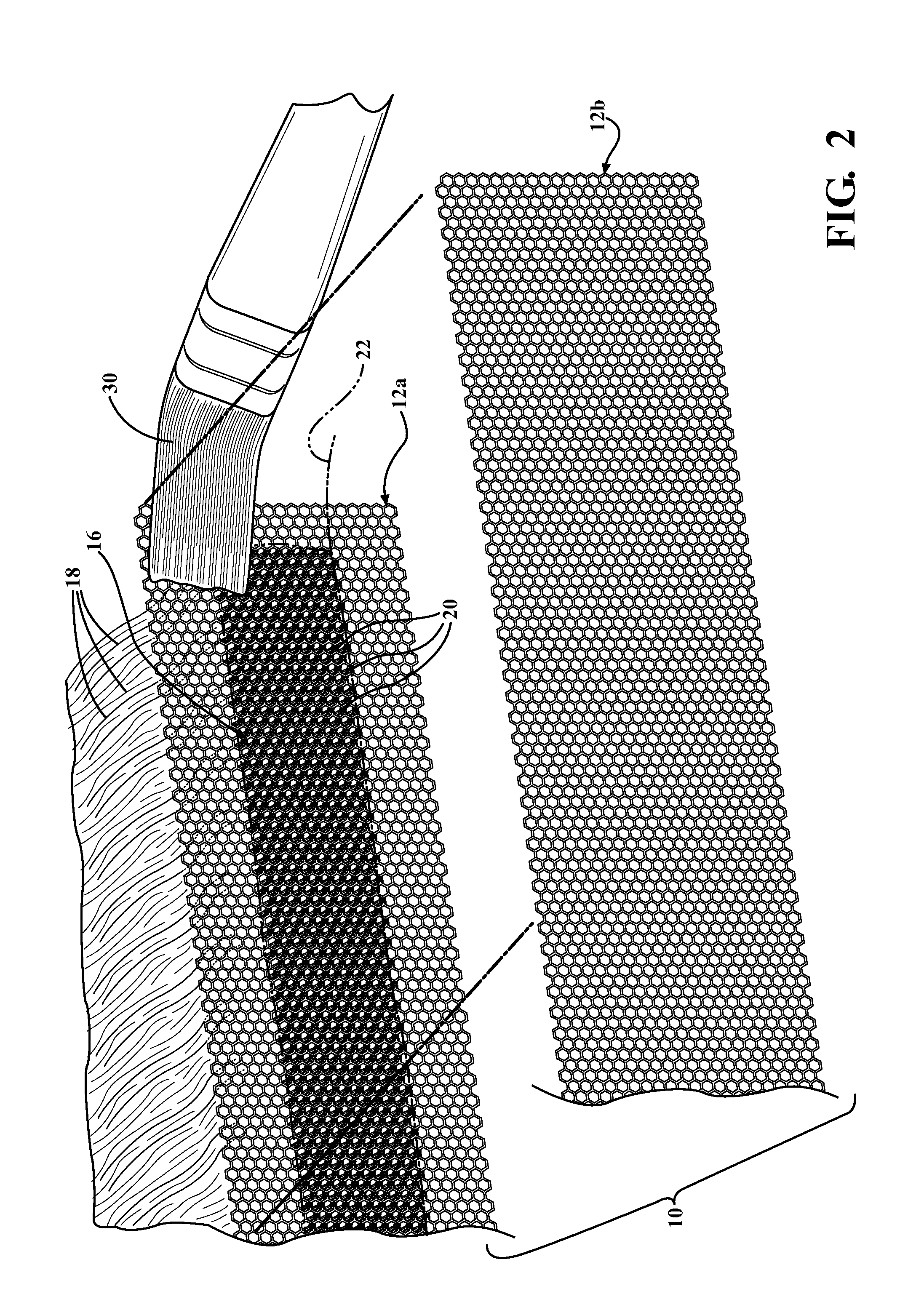Invisible Lace Weft
a weft and invisible technology, applied in the field of temporary hair extensions, can solve the problems of hair damage, skin/poly wefts are relatively stiff, and the lace is relatively difficult to detect, so as to reduce hair damage, reduce hair damage, and remove the weft with solvents. the effect of easy solvent removal
- Summary
- Abstract
- Description
- Claims
- Application Information
AI Technical Summary
Benefits of technology
Problems solved by technology
Method used
Image
Examples
Embodiment Construction
[0021]Referring first to FIG. 1, a lace weft extension 10 is shown in exemplary form in order to teach how to make and use the claimed invention. Extension 10 includes a lace base 12 made from French or Swiss lace (or equivalent) of the type known for use in full lace extension “units” or wigs. Base 12 includes an open lace area 14 surrounding the top, bottom, and side edges of a weft base 16.
[0022]Weft base 16 is the relatively narrow, longitudinal area of base 12 where extension hair 18 is secured to the lace by knots 20, preferably with each strand of hair 18 individually hand-tied to the lattice structure of the lace 12 in a manner generally known to those skilled in the art of making full lace extension units.
[0023]Weft 10 can be manufactured in any length. For example, the illustrated weft may be approximately 24″ in length, with FIG. 1 showing a first end and part of the body of the weft, the remainder of the body and the other end of the weft being essentially identical to t...
PUM
 Login to View More
Login to View More Abstract
Description
Claims
Application Information
 Login to View More
Login to View More - R&D
- Intellectual Property
- Life Sciences
- Materials
- Tech Scout
- Unparalleled Data Quality
- Higher Quality Content
- 60% Fewer Hallucinations
Browse by: Latest US Patents, China's latest patents, Technical Efficacy Thesaurus, Application Domain, Technology Topic, Popular Technical Reports.
© 2025 PatSnap. All rights reserved.Legal|Privacy policy|Modern Slavery Act Transparency Statement|Sitemap|About US| Contact US: help@patsnap.com



